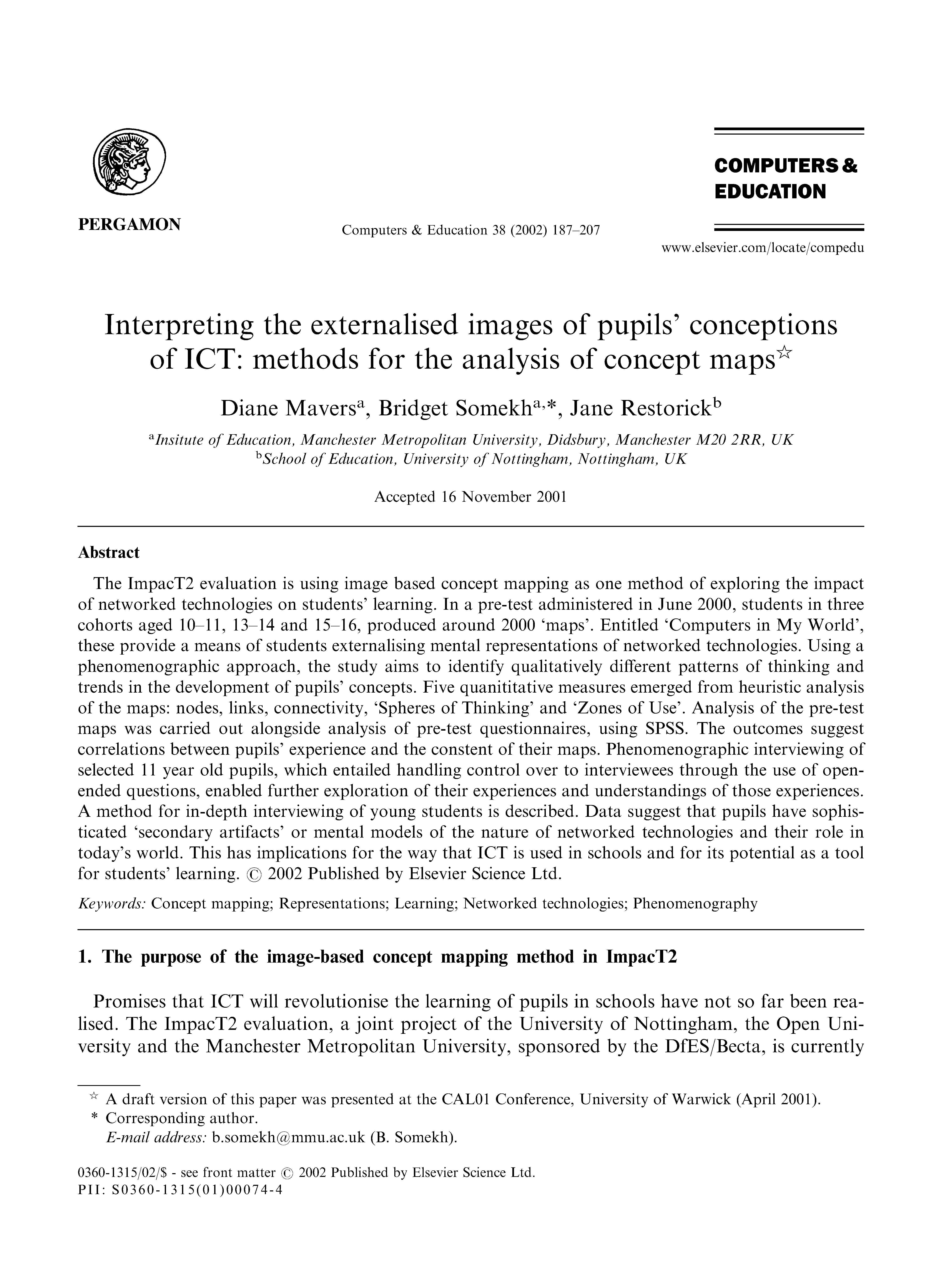Interpreting the externalised images of pupils’ conceptions of ICT
methods for the analysis of concept maps
Article Ecrit par: Restorick, Jane ; Somekh, Bridget ; Mavers, Diane ;
Résumé: The ImpacT2 evaluation is using image based concept mapping as one method of exploring the impact of networked technologies on students' learning. In a pre-test administered in June 2000, students in three cohorts aged 10–11, 13–14 and 15–16, produced around 2000 ‘maps’. Entitled ‘Computers in My World’, these provide a means of students externalising mental representations of networked technologies. Using a phenomenographic approach, the study aims to identify qualitatively different patterns of thinking and trends in the development of pupils' concepts. Five quanititative measures emerged from heuristic analysis of the maps: nodes, links, connectivity, ‘Spheres of Thinking’ and ‘Zones of Use’. Analysis of the pre-test maps was carried out alongside analysis of pre-test questionnaires, using SPSS. The outcomes suggest correlations between pupils' experience and the constent of their maps. Phenomenographic interviewing of selected 11 year old pupils, which entailed handling control over to interviewees through the use of open-ended questions, enabled further exploration of their experiences and understandings of those experiences. A method for in-depth interviewing of young students is described. Data suggest that pupils have sophisticated ‘secondary artifacts’ or mental models of the nature of networked technologies and their role in today's world. This has implications for the way that ICT is used in schools and for its potential as a tool for students' learning.
Langue:
Anglais
Index décimal
621 .Physique appliquée (électrotechnique, génie civil, génie mécanique, ingénierie appliquée, principes physiques en ingénierie)
Thème
Informatique
Mots clés:
Learning
Concept mapping
Networked technologies
Phenomenography

